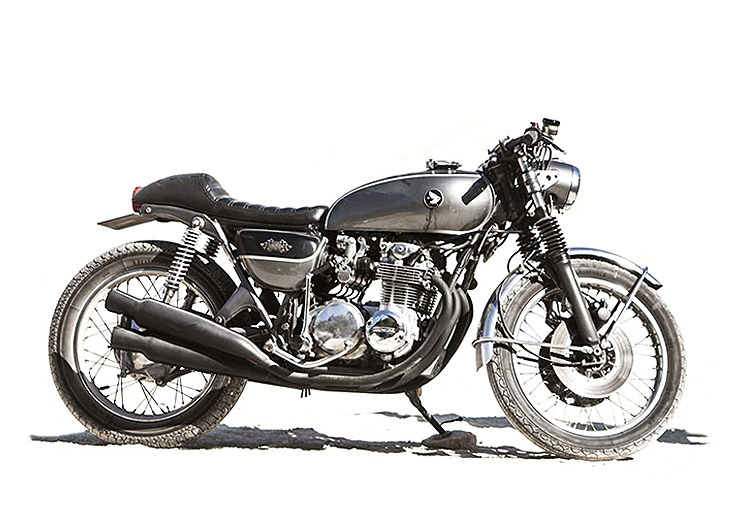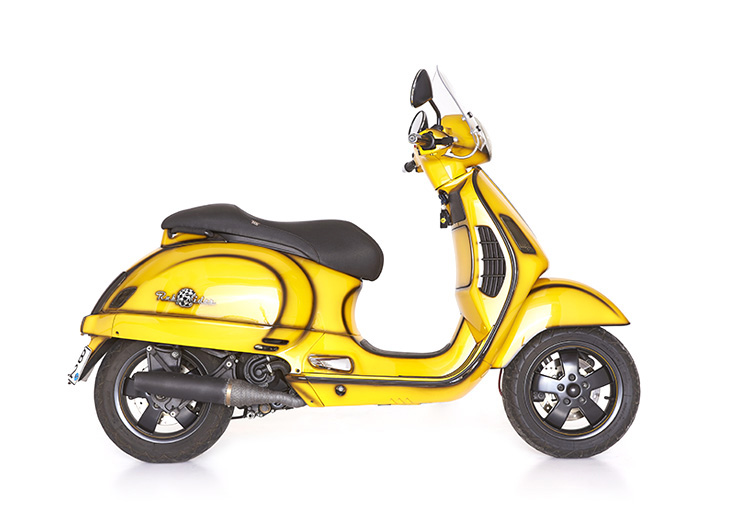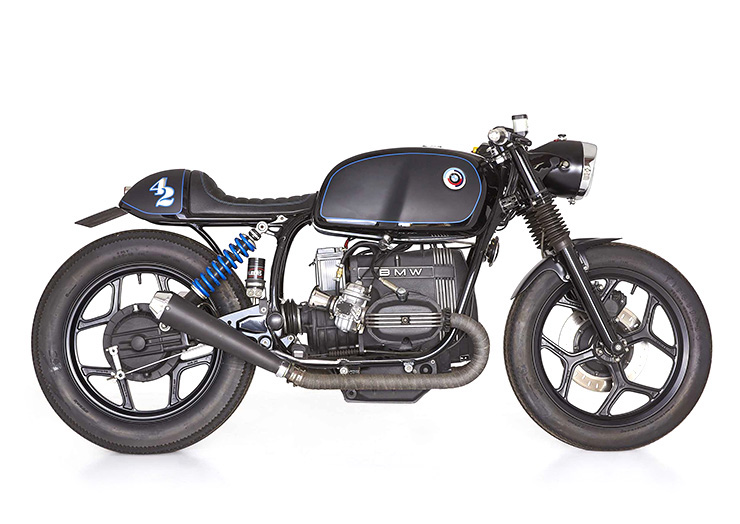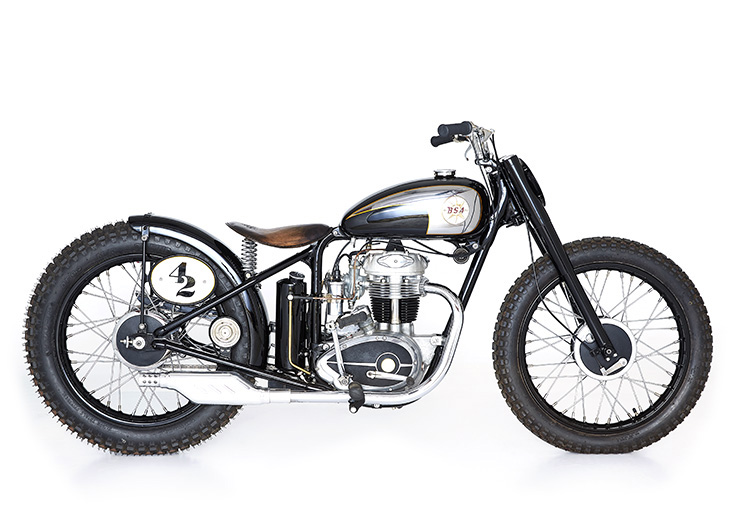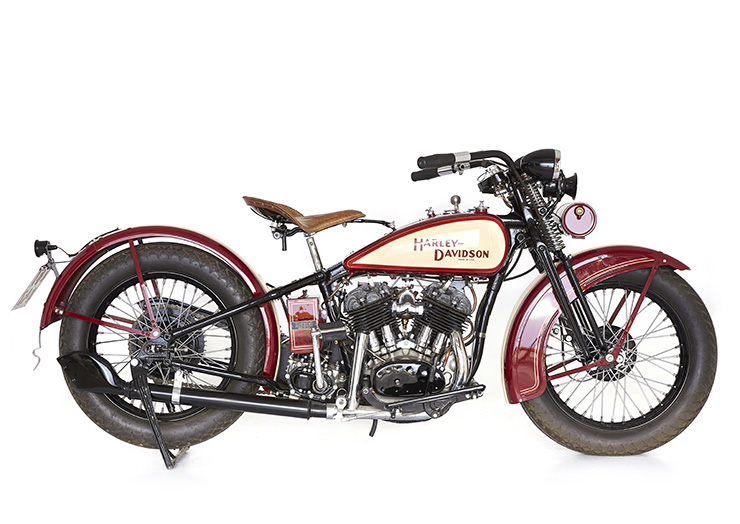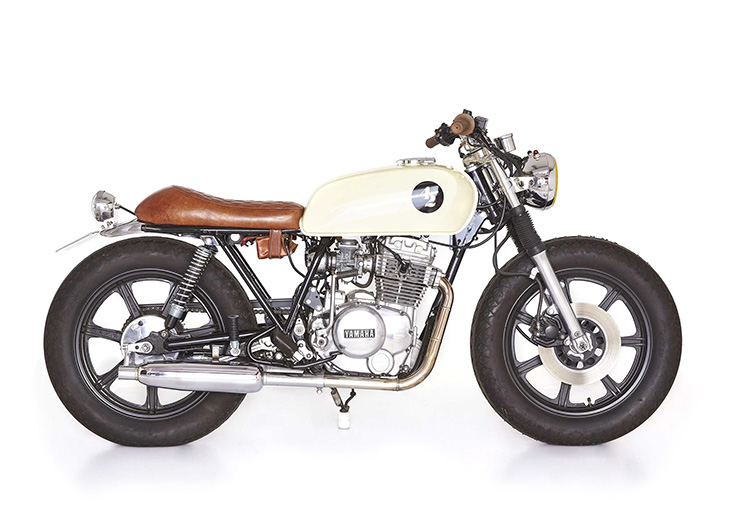Garázs
(avagy van élet a chopperen túl is)
A kezdetek
Az első (dokumentált) custom motorkerékpárt Harold Karslake (később a legendás Brough Superior motorkerékpárgyár főmérnöke) építette 1902-ben Angliában. A mai napig működőképes (!) „Csatahajó” (Dreadnought) megalkotásához egy DeDion blokkot és egy B.A.T. vázat használt, minden egyebet maga gyártott.
A II. világháború előtti korszak
Az első amerikai „sufnituning” építések a ’20-as években jelentek meg. A Cut-Down beavatkozásoknak általában a Harley modelljei (JDH, JD) estek áldozatul. A váz magasságát csökkentették, a hosszából pedig levágtak a lelkes építők. A ’30-as évek Bob-Job járműveihez a Harley Davidsonokon kívül már az Indian motorokat is alapul vették, sőt a custommegszállottak fel-felfedezték az angol motorkerékpárokat is. Ezek a járművek leginkább a kor „dirt track” versenygépeihez hasonlítottak.
A II. világháború utáni korszak
A ’40-es évek vége felé büszke gazdáik egyedi tankfestéssel, speciális kipufogókkal és króm alkatrészekkel kezdték szépítgetni a Bob-Job motorokat. Az ötvenes években népszerűvé váló járműszépségversenyek pedig remek alkalmat jelentettek, hogy azokat méltó módon bemutassák. Az évtized végére és a ’60-as évek elejére a motorépítés evolúciója eljutott a ma is sokak által ismert formáig, a chopper stílusig.
CaféRacer
Egyik személyes kedvencünk, a café racer stílus, az 1950-es évek Nagy-Britanniájában alakult ki, és mára az egyik legnépszerűbb motoros szubkultúra épült ki köré. A II. világháború után a brit fiatalok az egy- és kéthengeres vasakkal a kávézók között versenyeztek (innen a név). Ehhez persze könnyebbekké tették a gépeket (súly/lóerő), tuningolták a motort, és sportosan alacsonyra helyezték a kormányt. Éppen ezek a markáns karakterjegyek teszik könnyen felismerhetővé ezt a stílust. Nagyméretű tank és az ülés mögötti kis púp jellemzi a gépeket, amely lehet az ülés része, de akár egy önálló versenyidom is. A tank és az ülés alsó vonala jellemzően egy síkba esik a járműveken, a kipufogót pedig gyakran felfelé ívelik a motorépítők.
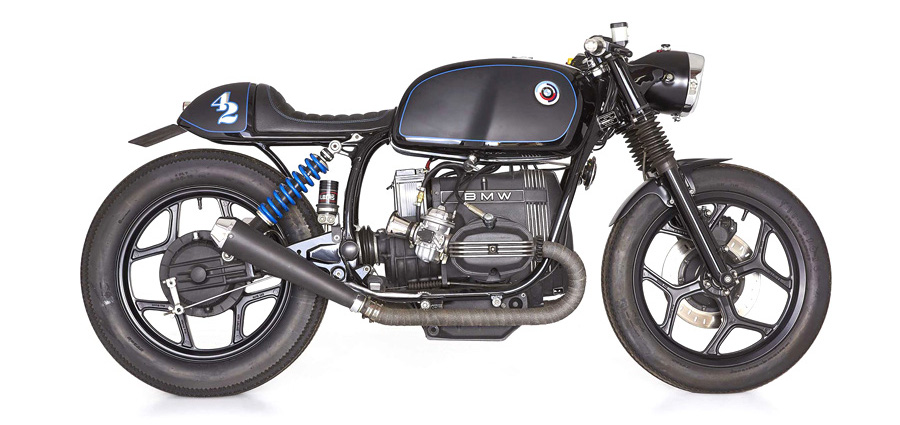
Tracker (flat/dirt/board/street/brat)
Ezt a motorépítési stílust az amerikai és ausztrál kevert felületű oválpályákon az 1910-es évek végén és ’20-as évek elején erőcsúsztatással kanyarodó, gyakran „keresztbemotorozó” versenyzőknek köszönhetjük. Az első fékkel nem kellett sokat bajlódniuk a korabeli „gladiátoroknak”, merthogy igény híján ilyen felesleges extrával ezek a motorok nem rendelkeztek. (A board track versenyek szintén ovális arénákban, de drágábban megépíthető és fenntartható deszkaborítású pályán zajlottak.) A flat track versenyek később az Egyesült Királyságon kívül főleg Európa északi és közép-keleti részén honosodtak meg. Az első európai salakversenyt 1928-ban a britek rendezték. Mivel roppant olcsó versenyzési forma volt és jól fizetett, hamar népszerűvé vált az első világháború után gyakran nélkülöző fiatalok között.
![]()
Sőt a második világháborúban az Olaszországban állomásozó szövetséges katonák, akik a boldog békeidőkben salakversenyzőkként keresték a kenyerüket, hamar versenyképessé alakították a Triumph 3HW, BSA M20, Norton I6H motorokat, hogy sebtében kialakított pályákon összemérjék a maguk és a motorok erejét. A háború befejezése után pedig Olaszországon túl Magyarországon, Németországban, Kenyában és Kuvaitban is szerveztek katonai salakmotorversenyeket.
Bobber
Ez a ’40-es évekből származó építési mód a chopper stílus előfutárának tekinthető. Szintén az Egyesült Államokból ered, habár azóta már nemzetközi hírnévre tett szert. (Sőt az ötlet tulajdonképpen a világháborúból Európába hazaérkező katonáktól származik, akik a tengerentúlon látott vasak sportosabb verzióit szerették volna otthon hajtani.) A későbbi chopperekéhez hasonló alacsony dőlésszögű első villa jellemzi ezeket a motorokat is, bár általában még rövidebbre szabva, mint amilyen a choppereké. A hátsó felfüggesztés jellemzően lengéscsillapítás nélküli, ezért „nem a legkényelmesebb kátyújáró” jármű az ilyen. Sárhányót nem vagy csak kurtított formában találunk ezeken a motorokon. Innen jön maga a bobber (bob = kurtít) angol kifejezés is. Jó példa a stílus népszerűségére, hogy a Harley Davidson is fejlesztett saját gyári bobbert, melyet Street Bobnak nevezett el.
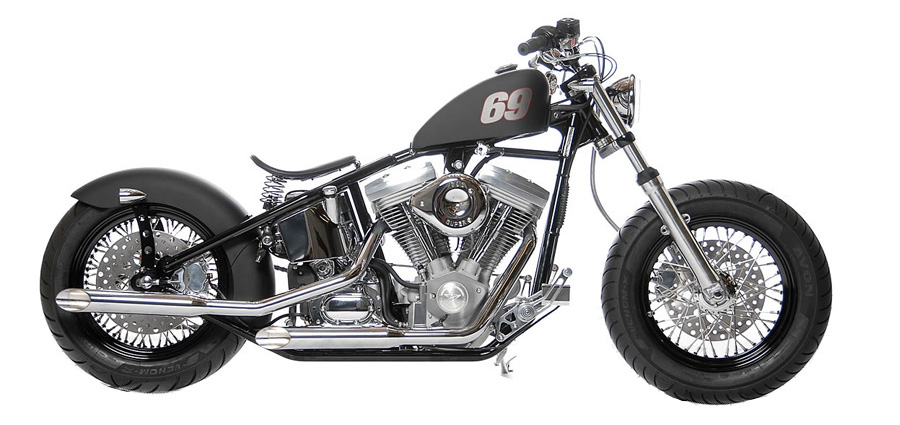
Chopper
Ezt a ’60-as években keletkezett stílust a nagyon alacsony dőlésszögű nyújtott első springer villa, a magas szárú hátrahajtott kormány és a merev hátsó felfüggesztés jellemzi. Gyakran magasított háttámlás hátsó üléssel építik. Igazi népszerűségre az Easy Rider (Szelíd motorosok, 1969) című, azóta kultikussá vált, Dennis Hopper által rendezett (és részben írt) film után tettek szert ezek a motorok. (A híres film operatőre egyébként Kovács László volt.) Napjainkra a chopperek népszerűsége csökkent. Még itthon is.

Scrambler
Ezek a motorok bütykös gumijaikkal, megerősített kormányukkal és hosszú rugóikkal igazi „hegymászók”. Talán a modern endurók elődjének is tekinthetők. Steve McQueen – vagy ahogy rajongói joggal nevezték, The King of Cool – többször bizonyította a kaliforniai sivatagban (is), hogy mire képes egy scrambler. Ha még nem (elégszer) láttátok, feltétlenül nézzétek meg McQueen On Any Sunday című filmjét!
A mozi roppant hitelesen mutatja be a ’70-es évek amerikai motorsportját. Egyébként manapság egyre népszerűbb ez a stílus; a Ducati gyári Scramblere például rövid időn belül minden idők legjobban eladott Ducatijává vált.
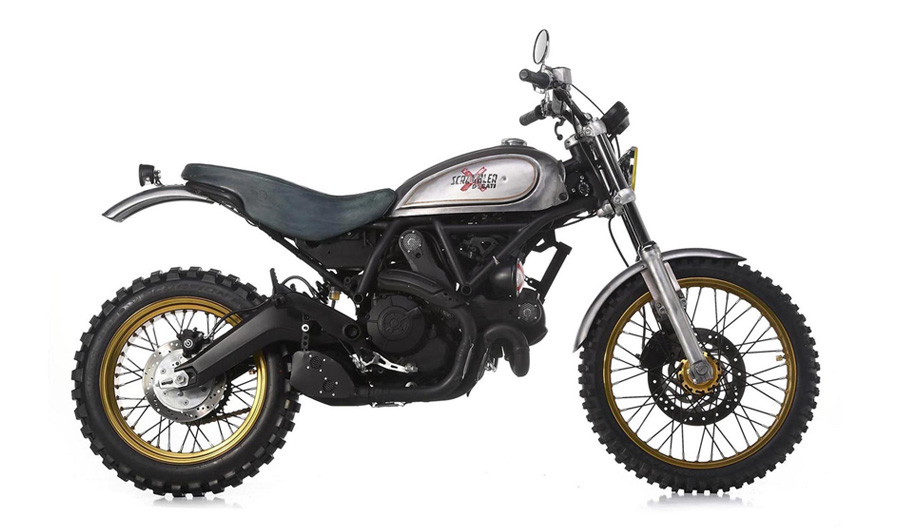
Digger
Ez a stílus a hetvenes években volt a legnépszerűbb, és alapvetően a gyorsulási versenyekre (negyed mérföld) optimalizált vázak köré épült. Ebből adódóan apró szögletes tank, merevített hátsó lengővilla (rugós tag kidob, vascső beköszön), előretolt villanyak, valamint hosszú tengelytáv jellemezte ezeket a robbanékony és persze alacsony súlypontú járműveket. (Arlen Nessnek egyébként sokat köszönhet a chopper/digger társadalom.) A hetvenes évek vége felé azért már ez a stílus is felpuhult kissé. A lelkes, de ízléssel kevésbé megáldott építők hol a bobber, hol a chopper stílusjegyeit keverték össze a digger génjeivel, mely házasságokból gyakran egészen elképesztő, eklektikus példányok születtek. És nem a legjobb értelemben.
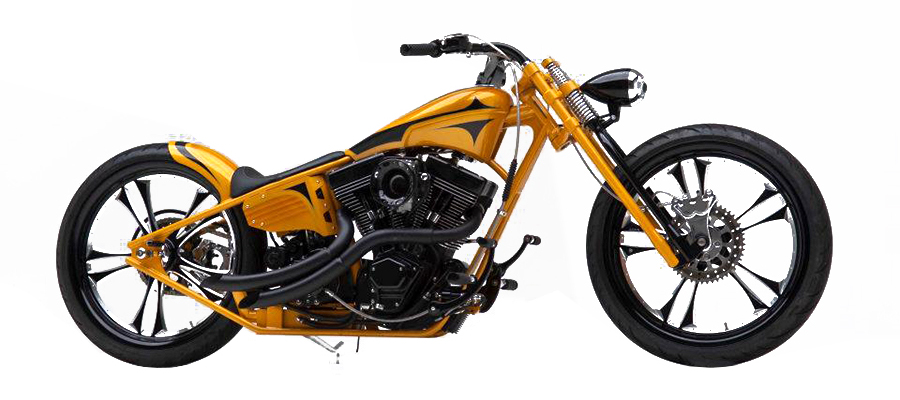
Brat Style
A korábban említett angolszász gyökerekkel szemben ez a motorépítési stílus egy Tokióban tevékenykedő csapatnak köszönhető, melyet Go Takamine vezet és Brat Style a neve. Mára a #bratstyle szerte a világon közkedvelté vált, önálló éltre kelt és számtalan épített motorra (jogosan vagy indokolatlanul) rábiggyesztik ezt a kifejezést. (BTW: ezt eponímiának hívják. Néhány hasonló példa: Xerox, Cola, Filofax, Jacuzzi, Colt, vagy a magyar nyelvben a dzsip kategória névadója, a Jeep márka.)
Sok brat stílusú motor a Yamaha XS650-es modelljéből vagy SR400-asából, esetleg régi Harley „sporikból” készül. A korábban említettek miatt is kissé nehéz meghatározni ennek a stílusnak a karakteres jegyeit, de azért általában jellemző ezekre a vasakra, hogy hátsó rugókkal, rövidre vágott sárvédővel, lapos, sokszor egyszemélyes üléssel és mini-ape vagy dirt kormánnyal rendelkeznek, továbbá építői a legtöbb esetben eltávolítják az áramvonalas idomokat és a krómfelületeket is a motorokról.
Az USA mellett Ázsiában és Ausztráliában is nagyon népszerű ez a stílus. A Monster Craftman és a Visual Impact cég is kínál brat (átépítő) kittet az egyik legnépszerűbb brat platformot biztosító Yamaha XS650-eshez. (Akit részletesen érdekelnek ezek a motorok, a Bike Shed vagy a Pipeburn oldalán is sok szép darabbal találkozhat.)
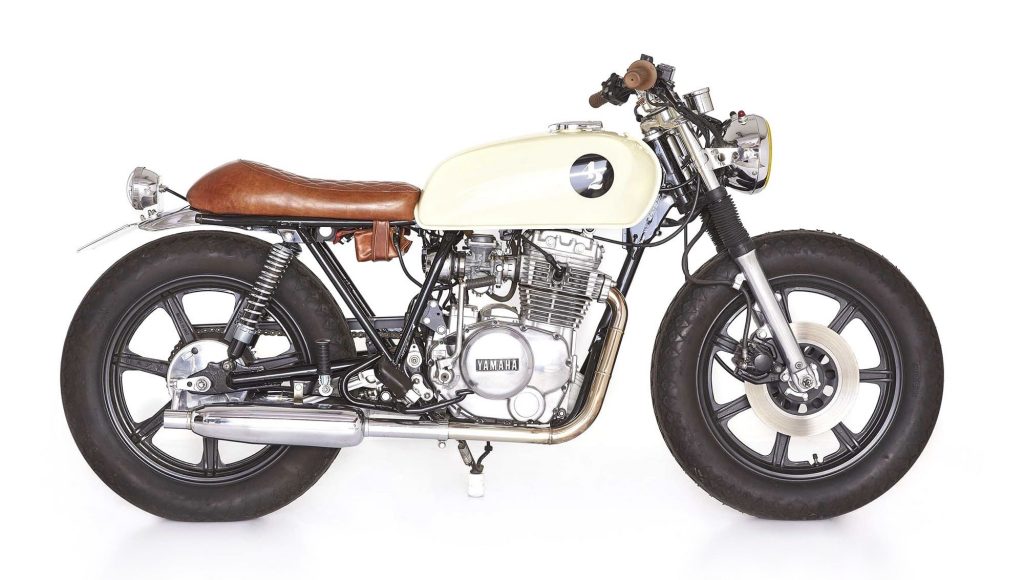
APE-HANGER
A motoros válla fölé érő „majomlógató” kormány. Általában choppereken látni ezt a feltűnő megoldást.
APEX
A kanyar középpontja az ’apex’, amikor az ideális kanyarív a legközelebb esik a kanyar belső oldalához.
BACKBONE
A váz fölső eleme, amelyre a tankot rögzítik.
BAGGER
Nagy túramotor kemény oldaldobozokkal.
BAR-HOPPER
Markánsan átalakított motor (gyakran bobber), amely csak rövid utakra kényelmes (pl. bártól bárig, innen a név).
BARK-O-LOUNGER
Naaagy, kényelmes „batár” motorkerékpár (pl. Honda Gold Wing).
BARN FIND
Vintage motor, melyre „istálló jellegű” helyen (padlás, szűr stb.) talált a boldog tulajdonos.
BEAD
A gumi éle, ahol a kerékkel érintkezik.
BEEMER
A BMW (egyik) beceneve.
BIG BALL
Utcai versenyzőkre használatos jelző, mellyel arra utal a szakzsargon, hogy tökös legényekkel állunk szemben.
BIG-BANG
A Honda kétütemű, ötszázas Grand Prix gyorsasági motorjánál először alkalmazott módosított gyújtásidőzítésről kapta a nevét.
BIG FIVE
Az öt nagy motorgyártó: Harley Davidson, Honda, Kawasaki, Suzuki, Yamaha.
BIG FOUR
A négy nagy motorosclub összefoglaló neve, amelyet az FBI Törvényenkívüli Motoros Gangnek minősít: Hell’s Angels, Pagans, Outlaws, Bandidos.
BIKER CHICK
A Hell’s Angels motorosbanda tagjai mögött helyet foglaló lány gúnyneve.
BIKE SHED
Motorostároló/fészer.
BLIND RIDE
A hirtelen megváltozott fényviszonyoknál bekövetkező „vakon” közlekedés.
BLUE GROOVE
A legendás kék csík, amely a félmérföldes, illetve mérföldes dirt track versenypályákon észlelhető, és az ideális ívet jelzi. Színe a döngölt agyag és az állandóan túlpörgő, ezáltal nyomot hagyó abroncsok egyvelegének köszönhető.
BRAAAP
Jellemzően a dirt track versenyzők által használt kifejezés, amikor valami számukra is meglepőt művelnek. Hangutánzó szó, mely a kétütemű tracker motorok hangját adja vissza. A szóban használt a betűk száma még vita tárgyát képezi.
BROOMSTICK
Egyenes kormány neve.
BUBBLEVISOR
Egy manapság ismét reneszánszát élő buborékos plexi, mely a hetvenes évek nyitott bukósisakjain volt először látható.
BUSA
A Hayabusa (GSX1300R)-tulajdonosok becézik így járművüket.
CAGER
Személyautó, teherautó vezetője (aki nem veszi észre a motorosokat, mert pl. telefonál).
CATEYE
A hátsó lámpa egy speciális formája.
CATWALK
A wheelie brit szinonimája. (A stoppie-val ellentétben itt a hátsó kerék érintkezik a talajjal.)
CENTURY
A 100 mérföld/óra sebesség megnevezése.
CHAPTER
Motorosbandák helyi képviseleteinek gyűjtőneve.
CHATTERING
Féktávon rakoncátlankodó motorkerékpár viselkedése.
CHURCH
Motorosklub-találkozó.
CUSTOMER
Motorkerékpár-átépítéssel foglalkozó egyén.
CUTDOWN
Lecsupaszított robogó.
ENDO
A ’stoppie’ kifejezés másik elnevezése, amikor az erős (front)fékezésnél a motor vége megemelkedik.
FRAMER
A rövid pályás flat track motorok gyűjtőneve. Általában egyhengeres négyütemű, négyötvenes blokkal készültek.
FRANKENBIKE
Különböző motorkerékpárokból összetákolt kétkerekű. (Néha található köztük valóban figyelemre méltó darab is.)
FRISCO STYLE
A váz tetejére „ültetett” tank jellemzi ezeket a motorokat.
GIXER/GIXXER
A Suzuki GSX-R beceneve.
GROCERY GETTER
A motoros (ember) középosztályú családi autója.
HACK
Oldalkocsi beceneve.
INK SLINGER
Tetoválóművész.
DOME (vagy Lid)
A bukósisak beceneve.
DONOR
Annak a motornak a megnevezése, amelyből alkatrészeket „műtenek át” egy másik motorba.
DRESSER
Nagymotor teljes túrafelszerelésben (szélvédő plexi, oldaltáskák stb.).
HARDTAIL
Motor hátsó lengéscsillapítás nélkül.
HAPPY RIDER
A boldog, vigyorgó motoros ritkán használatos gúnyneve, akinek a fogaira bogarak tapadtak. Még véletlenül sem összekeverendő a happy finish kifejezéssel.
HIGHSIDE
Veszélyes bukási forma, amikor a hátsó keréken elvesztett, majd hirtelen visszanyert tapadás miatt ijesztő módon „égbe katapultál” a pilóta. (Lásd még lowside!)
HOONING
A közlekedési szabályokat súlyosan megsértve huligánként (hooligan) motorozni közúton (wheelie, stoppie és társai).
JUGS
Szleng kifejezés a motor hengereire.
LANE SPLITTING
A városi forgalomban jellemző gyakori sávváltás, cikázás.
LOWSIDE
A highside bukásokkal szemben ez a gyakoribb (és általában kevésbé veszélyes) baleset. Ilyenkor a hátsó kerék elveszti tapadását, és kicsúszik oldalra.
MONKEY BUTT
A hosszú motorozás miatt sajgó fenék.
PETROLHEAD
Benzinnel fertőzött, motorizált járművekért rajongó egyén.
POWER RANGER
Sportmotoros, akinek az egyrészes bőrruhája, a kesztyűje, a bukója, sőt sok esetben még a motorjának színösszeállítása is passzol egymáshoz.
POWER SHOWER
Amikor bőrig ázol a motoron a megfelelő védőcucc nélkül.
POWER SLIDE
Egy olyan kanyarvételi technika, amelyben úgynevezett erőcsúsztatással – a hátsó kerék túlpörgetésével – próbálja a versenyző minél nagyobb sebességgel abszolválni a hosszú, nyújtott kanyarokat.
RAT MOTOR
Olyan ütött-kopott, rozsdás motor, amely úgy néz ki, mintha most találták volna meg egy száz évig tartó és meglehetősen gondatlan tárolás után (pl. a Duna mélyén).
ROAD RASH
Esés után ilyen mintát rajzol rád a rideg aszfalt, ha nem viselsz megfelelő ruhát.
ROOST
Dirt motor által felszórt sár.
RUBBER
Motoros nyelvhasználatban a gumiabroncs neve.
SCARY CORNER
Motoros szlengben a veszélyesnek ítélt kanyar kifejezése.
SMOKER
A kétütemű motorkerékpárok gúnyneve, mivel füstöt okádnak.
SQUID
Motoros bukósisak és/vagy megfelelő ruha nélkül.
STUFF
Motorosfelszerelés.
SWEEP
Záró motoros a sorban.
TANK-SLAPPER
Az a roppant ijesztő jelenség, amikor a kormány hirtelen elkezd „szitálni”.
TOOLS
Motorszerelésnél használatos szerszámok.
TUNER
A motorblokkot finomhangoló, annak teljesítményét növelni képes szakember.
UJM (Universal Japanese Motorcycle)
A ’70-es évek soros, 4 hengeres motorral és csővázzal rendelkező átlagos japán masinái, amelyek kissé túlárazottakká váltak, miután a hipstertársadalom „felfedezte” őket magának.
UPSIDE DOWN
A modern sportmotoroknál alkalmazott fordított első villa.
WHEELIE
Motoros egykerekezés.
2 Wheels Move The Soul.”
Csapat
A Route42 motorok egyedülálló személyi garanciáját a következő szakemberek szavatolják.
|
a My Little Melbourne Coffee alapítója és a Route42 Think.scrambler divíziójának vezetője |
|
magyar bajnok és világbajnok virtuálistuning művész, a Jakusa Design alapítója, motorjaink digitális tervezője |
|
a Route42 és Group42 márkák alapítója, a Route42 és Blogger42 blogjának lelkes társszerzője. |
|
az EGYETLEN hazai világbajnok motorversenyző, a különleges Route42 járművek értő tesztelője |
|
grafikusművész és zenész, számos szakmai díj birtokosa, a Route42 teljes arculatának tervezője |
|
az EGYETLEN hazai Európa-bajnok és ezüstérmes világbajnok motorépítő, kegytárgyaink alkotója. |
|
kaotikus életet élő, szentimentális motorkerékpár-őrült, a Route42 és Blogger42 blogjának szakmai társszerzője |
|
a Blogger42 társszerzője |

2018. szeptember 30-án, másodszor szerveztük meg a Distinguished Gentleman’s Ride budapesti rendezvényét. Ez a világ legnagyobb klasszikus/vintage motorkerékpáros felvonulása, amely a világ legnagyobb, a férfiak egészségmegőrzésével foglalkozó alapítványát, a Movember Foundationt támogatja.
Az egyedülálló nemzetközi futam az elmúlt hat évben közel 19 millió dollárt (!) gyűjtött a nemes célokra. 2018-ban 101 ország 648 városában több mint 115.000 elegáns motoros csatlakozott a kezdeményezéshez, amely több mint 6.000.000 dollárt (!) gyűjtött a Movember Alapítványnak.
Különösen büszkék vagyunk a 2018-as elképesztő hazai eredményekre! Több mint 4.000.000 forint(nyi dollárt) gyűjtöttünk és 571 motoros (!) regisztrált a budapesti rendezvényünkre! Ezzel a fantasztikus eredménnyel a 101 országot tartalmazó nemzetközi adományozási ranglista 32. helyén végeztünk!
A magyar DGR_2018-futam főszponzora a férfi szűrővizsgálatok vezető specialistája, Európa legnagyobb magánegészségügyi szolgáltatójának hazai tagja, a komplex egészségügyi és képalkotó diagnosztikai szolgáltatásokat kínáló Affidea Magyarország volt. A rendezvényt ugyancsak támogatta az UniCredit Bank Hungary, a Közép- és Kelet-Európában legnagyobb nemzetközi bankhálózatot működtető UniCredit magyarországi tagja. A futam utáni bulika remek helyszínét a Szőke Gábor Miklós Stúdió biztosította számunkra.
A prosztatarákrólÉvente 4000 friss regisztrált eset és 1500 elvesztett férfiélet – ezek a hazai prosztatarák riasztó statisztikái Magyarországon. Szakértők szerint az évenkénti prosztatarákszűrés minden 40 év feletti férfinak javasolt még panaszmentes állapotban is, hiszen a korai diagnózis a betegség sikeres kezelésének legfontosabb feltétele.
A prosztatarák leginkább idős korban, elsősorban a 60–75 éves korosztályban fordul elő, de ötvenéves kor felett a férfiak 40%-ánál már kimutatható a jelenléte.
Magyarországon a diagnosztizált prosztatarákos betegek szinte 80%-a későn, már áttétes stádiumban megy orvoshoz, ezzel szemben Nyugat-Európában és az USA-ban 80%-uk már akkor elkezdi a terápiát, amikor a daganat még nem terjed túl a prosztata határain.
Itthon 40 éves kor felett ajánlott az éves prosztataszűrés, 50 év felett, kiegészítésként, javasolt az úgynevezett PSA-szűrés is, 60 éves kor után pedig félévente tanácsos felkeresni az urológus szakorvost.
A korábbi rendezvények filmjei itt tekinthetőek meg:
DGR Budapest 2024, DGR Budapest 2023, DGR Budapest 2022, DGR Budapest 2019, DGR Budapest 2018, DGR Budapest 2017
DGR BUDAPEST 2018
Fotók
DGR Budapest 2018 fotók (Soós Bertalan képei)
DGR Budapest 2018 fotók (Talabér Géza képei)
Videók
DGR Budapest 2018
DGR 2018 nemzetközi film
DGR 2018 launch video magyar felirattal
DGR 2018 beharangozó videó
Hasznos linkek
Distinguished Gentleman’s Ride
Movember Foundation
DGR BudaPest 2018 Facebook event
Cikkeink a témában
cikk-1, cikk-2, cikk-3, cikk-4, cikk-5, cikk-6, cikk-7, cikk-8
Fontosabb média megjelenések
RTL Klub
TV2
ATV
HírTV
TV2 Mokka
HVG
Playboy
Bors
Blikk
Men’s Health
Igényes férfi
Csajok a motoron
Motorrevü
OnRoad
Tesztmotor
Phenom’enon
Ridikül
Trend FM interjú
DGR BUDAPEST 2017
Fotók
DGR Budapest 2017 fotók
Videók
DGR Budapest 2017
DGR Promo 2017
DGR Global 2017
DGR Register Now 2017
Hasznos linkek
Központi honlap
DGR BudaPest 2017 Facebook event
Fontosabb média megjelenések
RTL Klub
Totalbike
Blikk
Vezess.hu
Lokál
Igényes férfi
168óra
Profitline
Sztárklikk
A BELSTAFF TÖRTÉNETE
A hollywoodi sztárok kedvenc motoros ruházati márkáját Eli Belovitch vejével, Harry Grosberggel 1924-ben hozta létre.
